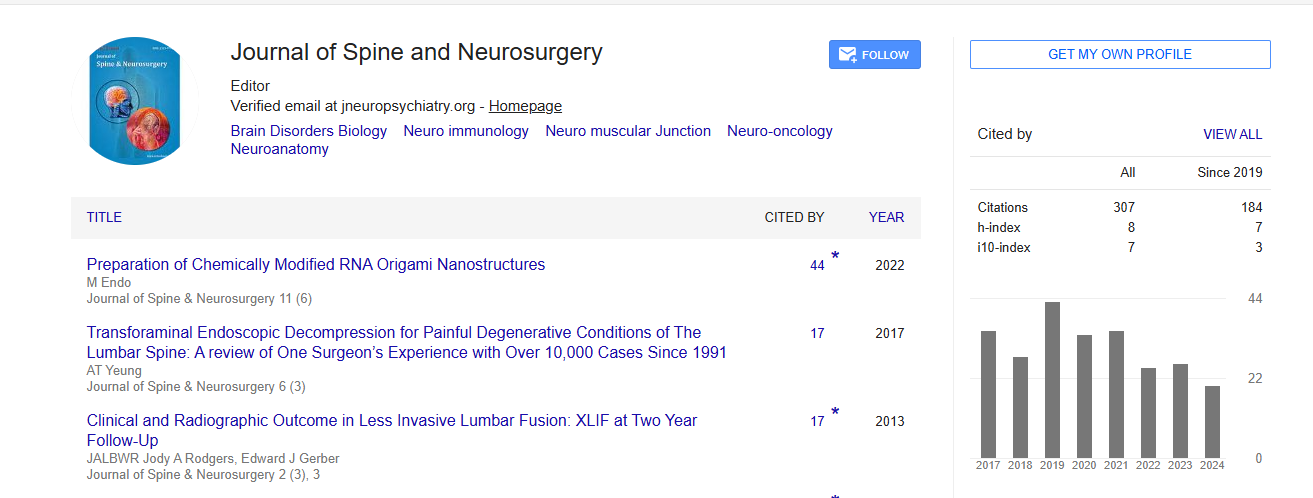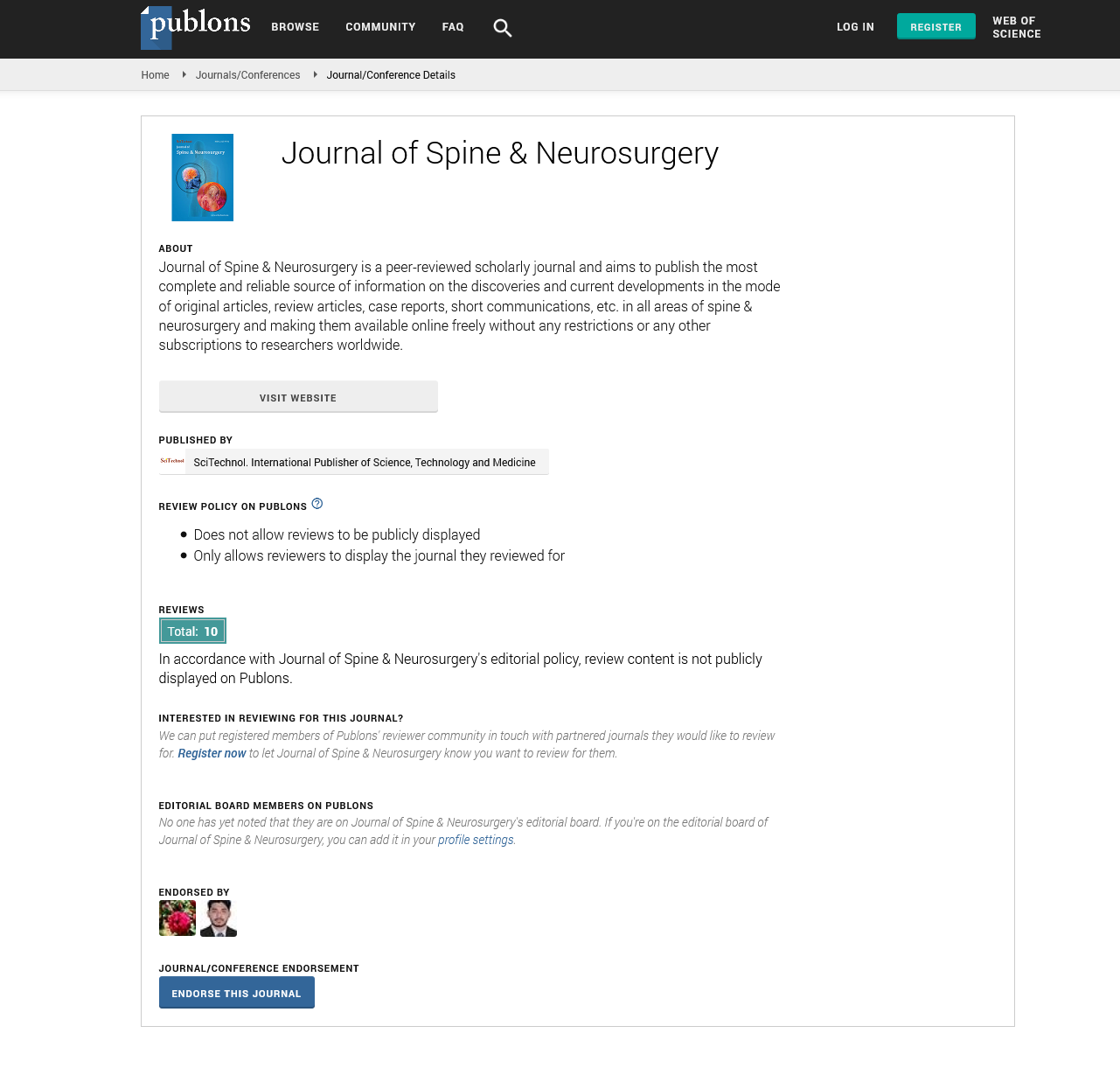Prevalence and outcomes of Gullian Barre syndrome among pediatrics in Saudi Arabia: A 10-year retrospective study
Safiyyah Asiri
King Abdullah Children Specialist Hospital, Saudi Arabia
: J Spine Neurosurg
Abstract
Background: Guillain-Barré syndrome (GBS) among Saudis has been seldom investigated. Therefore, this study aims to assess the prevalence and clinical prognosis of GBS among pediatrics with acute paralysis at a large healthcare facility in Saudi Arabia. Methods: This retrospective study reviewed patients’ medical records. Eligible cases were children (<14 years old) diagnosed with GBS. Pearson’s chi-square, Fisher’s exact test and binary logistic regression were employed to analyse the collected data. Results: The prevalence of GBS was 49%. The male-to-female ratio was 1.45:1. The mean ± standard deviation age was 7±3.7 years. There were 34 (69.4%) cases with progression to maximum paralysis in ≤2 weeks, while 15 (30.6%) cases occurred beyond 2 weeks. Males (n=24, 82.8%) were more likely to endure progression to maximum paralysis in ≤2 weeks after the disease onset, compared to females (n=10, 50%), P=0.014. All cases complaining of respiratory problems exhibited a progression to maximum paralysis in ≤2 weeks, compared to those with no respiratory problems, P=0.027. Residual paralysis at 60 days post disease onset was highly associated with GBS patients of age 8–14 years (n=15, 65.2%), compared to younger patients (n=8, 30.8%), P=0.016. Patients admitted in colder seasons (n=14, 63.6%) were more likely to suffer residual paralysis too, compared to those in warmer seasons (n=9, 33.3%), P=0.035. GBS cases who complained of facial weakness (n=9, 75%) and ocular abnormalities (n=10, 71.4%) were also more likely to endure residual paralysis at 60 days post disease onset, P=0.025, and P=0.03, respectively. Conclusion: Male gender could be a determinant of rapid progression to maximum paralysis, while the older age group in pediatrics is expected to endure residual paralysis at 60 days post disease onset. GBS can be considered as a rare disease, especially in pediatrics, so confirmed cases should be investigated comprehensively for research purposes. Conclusion: Male gender could be a determinant of rapid progression to maximum paralysis, while the older age group in pediatrics is expected to endure residual paralysis at 60 days post disease onset. GBS can be considered as a rare disease, especially in pediatrics, so confirmed cases should be investigated comprehensively for research purposes.
Recent Publications:
1. Safiyyah Asiri, W. A. (2019). Prevalence and outcomes of Guillain-Barré syndrome among pediatrics in Saudi Arabia: a 10-year retrospective study. Neuropsychiatr Dis Treat., 15: 627–635.
2. Waleed Altwaijri, F. A.-R. (2019). Familial Hemiplegic Migraine with Prolonged Coma and Hyperthermia: ATP1A2 Gene Mutation Case Report in a Single Saudi Family. JBCGenetics., 2(1): 85-90.
 Spanish
Spanish  Chinese
Chinese  Russian
Russian  German
German  French
French  Japanese
Japanese  Portuguese
Portuguese  Hindi
Hindi 
